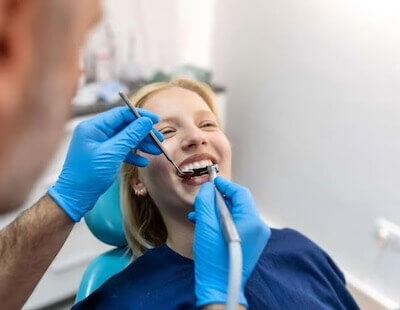Dental crowns are versatile restorations that have helped countless individuals regain functional, aesthetically pleasing smiles. However, myths and misconceptions surrounding crowns can often create unnecessary hesitation and anxiety. In this post, we aim to shed light on the truth behind 10 common misconceptions to empower you to make informed decisions about your dental health. Let’s dive in!
Myth 1: Crowns Look Fake and Unnatural
Gone are the days of bulky, porcelain monstrosities that look fake. Modern advancements in materials and techniques offer crowns that seamlessly blend with your natural teeth. Dentists utilize durable, high-quality materials that closely mimic natural teeth’ appearance. The shade and shape of your crown are meticulously customized to match your surrounding teeth, ensuring a harmonious and undetectable restoration.
Myth 2: Crowns are Always Bright White and Stand Out
While some individuals choose to whiten their teeth alongside crown placement, it’s crucial to understand that crown color selection is independent. Dental professionals prioritize matching your existing teeth for a natural, cohesive look. Bright white smiles don’t always equate to natural beauty. Discussing your aesthetic preferences with your dentist ensures a personalized result that complements your unique smile.
Myth 3: You Can’t Get Crowns on Front Teeth Due to Aesthetics
This absolutely is not true. The advancements mentioned earlier hold true for front teeth, as well. Whether you have a cracked incisor or a discolored canine, natural-looking crowns can restore its beauty and function. In some cases, porcelain veneers might be an alternative option for purely cosmetic concerns. Regardless, achieving a stunning smile in the front is very much within reach.
Myth 4: Crowns are Permanent and Never Need Replacement
While incredibly durable, crowns aren’t impervious to time and wear. With proper care, they typically last several years. Factors like oral hygiene habits, underlying bite issues, and material choice can influence lifespan. Regular checkups let your dentist monitor your crown’s condition and address any concerns before major issues arise. Remember, just like your natural teeth, crowns require care and maintenance.
Myth 5: Crowns Make Teeth Stronger and Prevent Future Damage
Crowns provide crucial support and protection to weakened teeth, but they don’t create an invincible shield. Maintaining good oral hygiene is still vital. Just like natural teeth, crowned teeth are susceptible to decay and gum disease if you neglect them.
Myth 6: You Can Use Crowned Teeth Like Tools
Treat your crowned teeth with the same care as your natural ones. Using them for tasks like biting your nails, opening packages, or cracking nuts puts them at risk of damage or fracture. Your crowns are dental restorations — not indestructible tools. Enjoy the restored functionality they offer, but handle them with care to ensure their longevity.
Myth 7: Dental Crowns are Too Expensive and Only for Wealthy People
While the cost of dental crowns varies depending on the material, size, and complexity, various options exist to fit different budgets. Most dentists offer several options with varying costs and benefits to allow you to find a solution that aligns with your budget. Additionally, flexible payment plans and insurance coverage can help make crowns more accessible. Investing in your oral health is an investment in your overall well-being, and it certainly isn’t just for wealthy people.
Myth 8: Only Celebrities Get Cosmetic Crowns for Aesthetic Reasons
Cosmetic dentistry isn’t just for celebrities. Crowns can address a variety of concerns beyond functionality, such as chipped teeth, gaps, misshapen teeth, or severe discoloration. They can boost confidence, improve self-esteem, and enhance the overall aesthetics of your smile. Whether you seek to correct minor imperfections or completely redesign your smile, discussing your cosmetic goals with your dentist can help you explore various options, including crowns, that fit your budget and goals.
Myth 9: You Don’t Need to Floss or Brush Crowned Teeth as Meticulously
Unfortunately, crowned teeth aren't immune to plaque and bacteria. Flossing and brushing around crowned teeth is crucial for maintaining good hygiene and keeping gum disease at bay. Special flossing techniques and interdental brushes can effectively clean the areas around the crown and beneath the gum line. Gum disease can compromise a crown's longevity and impact your oral health, so don’t skimp on hygiene.
Myth 10: Crowns Are Immune to Staining and Discoloration
Certain types of crowns, particularly metal-based ones, are more resistant to staining than others. However, ceramic crowns are susceptible to staining from coffee, tea, red wine, and other pigmented foods and beverages. Practicing good oral hygiene, limiting staining foods and beverages, and scheduling regular professional cleanings can help minimize discoloration and maintain your crown’s appearance.
Is a Dental Crown Right for You?
Not sure whether a crown is right for you? Here are some tips to help you make an informed decision.
- Seek recommendations: Ask your family, friends, or colleagues for recommendations of dentists with experience in placing crowns. Ask them about their experience with crowns, too.
- Schedule consultations: Consult with multiple dentists to compare their approaches, treatment plans, and cost estimates.
- Understand the procedure: Discuss the entire process, including the number of appointments required, potential risks and complications, and post-operative care instructions.
- Consider all options: Explore different crown materials, their pros and cons, and how they align with your budget and aesthetic preferences.
- Don’t rush the decision: Take your time to gather information, weigh your options, and feel confident in your choice before proceeding.
Now that you know the truth behind some of the most common dental crown myths, we hope you can approach dental crown treatment with confidence and make informed decisions for a healthier, happier smile. Remember that a beautiful smile is an investment in your overall well-being, and open communication with your dental professional is key to achieving the best possible outcome.

